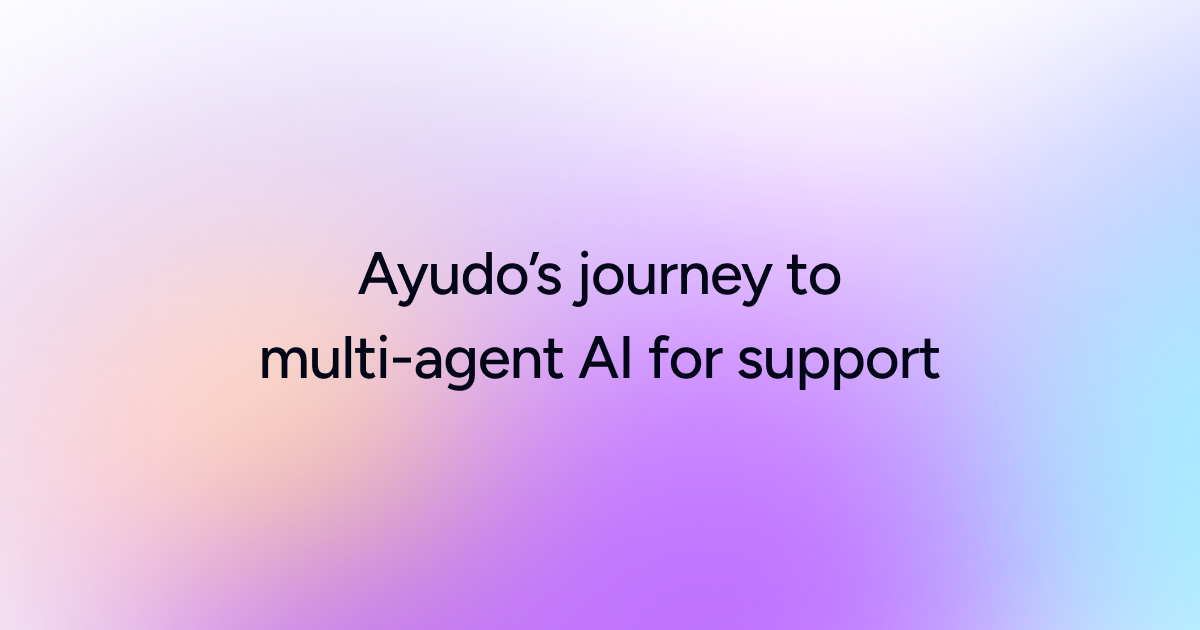
Last year, while working together at Freshworks, Nitin and I (Shashwat) began noticing a big gap in how AI agents were evolving versus how customer problems were actually being solved.
On one side, the market was buzzing with excitement about AI. On the other, we could clearly see customer pain points that weren’t being addressed—especially as businesses kept asking for more and more use cases to be automated.
“We realized it wasn’t just about solving the problems customers already knew they had. The real opportunity was in solving the ones they weren’t even thinking about—things only possible when multiple AI agents worked together.”
— Shashwat
Our First Steps: Field Service Management
We initially started in a niche—field service management.
Imagine a customer in the US raising a request for a home service, landscaping, or equipment repair. The workflow looked something like this:
- Could we troubleshoot issues at an L0 level so the customer didn’t need human support at all?
- If not, could we auto-route the request to the right agent instantly?
- Once assigned, could we give the field technician their own AI assistant to guide them in real time?
“The idea was simple: save time for the customer and empower technicians with an assistant of their own. That was our first attempt at redefining support.”
— Nitin
Early feedback was encouraging. But as we spoke to more customers—especially in the US and Europe—we began to notice something bigger.
The Bigger Gap: Beyond Chatbots at L0, L1, and L2
Everyone in the market was busy solving L0 support with simple chatbots. Ask a question, get a scripted response—done. But that approach came with its own limitations.
Companies were overloading single AI agents with endless SOPs, tools, and instructions. The result? Inflexible bots that struggled the moment conversations became dynamic.
“Even at L0, customer journeys aren’t linear. A user might come in asking for an order status, but then pivot to a refund, a cancellation, or a reschedule. One overloaded chatbot can’t handle all those flows well. You need specialized agents that hand off seamlessly.”
— Shashwat
This was true not only for L0, but even more so for L1 and L2 support, where problems require coordination across internal teams, external vendors, and technical specialists.
“We saw that L0 was crowded, but not truly solved. And L1 and L2—the real pain points—were untouched. That’s when we realized we needed to pivot.”
— Shashwat
What Customers Told Us
As we dug deeper into conversations with customers, another insight stood out. Businesses weren’t just thinking about customer-facing agents.
They wanted internal AI assistants too—agents that could collaborate with internal teams, vendors, or even partners on channels like Slack.
“Customers kept saying: I don’t just want a chatbot for my customers. I want a single platform where my internal and external AI agents work seamlessly—consistent in tonality, easy to configure, integrated across tools, and capable of handling L0, L1, and L2 workflows.”
— Nitin
That was the unlock. Field support was niche, but customer support—external and internal—was a far bigger market.
Pivoting to Ayudo
With that insight, we decided to pivot.
Fieldr.ai (our original name) evolved into Ayudo.ai.
Why Ayudo? In Spanish, it means “I help.” That’s exactly what we wanted our product to stand for—helping businesses deliver better customer experiences at scale.
And unlike traditional tools, Ayudo wasn’t built to be “just another chatbot.”
We envisioned a multi-agent architecture—where specialized agents collaborate across voice, text, routing, and actions to power complex, multi-step workflows.
“We wanted Ayudo to be a team of AI agents that could work like human teammates—coordinating, collaborating, and resolving customer queries without friction.”
— Nitin
Real-World Use Cases
Working with large e-commerce and automotive players across the US, Canada, India, and Europe, the opportunities became clear.
Take a simple example:
A customer asks, “What’s the status of my order?”
Traditionally:
- An agent picks up the ticket.
- They email or call the vendor.
- They wait for a response.
- Then they get back to the customer.
With Ayudo:
- A voice agent directly calls the vendor for the latest status.
- Or an email agent automatically triggers the request.
- The system updates the ticket and closes the loop—without human intervention.
“When we showed this to customers, they immediately saw the potential. It wasn’t about small efficiencies—it was about fundamentally rethinking how support could work.”
— Shashwat
What’s Next
We started out by trying to help field technicians.
We ended up building a platform that can transform how businesses deliver customer support altogether.
From L0 to L2, from customer-facing to internal workflows, from simple deflection to complex orchestration—Ayudo is here to help.
After all, that’s what our name stands for.
Ayudo. I help.






